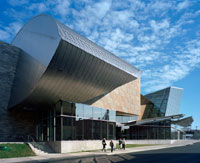 Another art museum is in trouble: the Taubman Museum of Art in Roanoke, Va., which just opened in late 2008, announced its fourth round of layoffs in its less than two years of existence. Current staff numbers just 17, according to the Roanoke Times.
Another art museum is in trouble: the Taubman Museum of Art in Roanoke, Va., which just opened in late 2008, announced its fourth round of layoffs in its less than two years of existence. Current staff numbers just 17, according to the Roanoke Times.
The museum, in downtown Roanoke, with roots going back to 1951, had high hopes. Read from its “about” statement:
At the heart of downtown Roanoke, the new 81,000 square foot Taubman Museum of Art proves an arresting landmark for visitors…As Roanoke’s most contemporary structure, it provides an analog for the city’s evolution from industrial and manufacturing town to technology-driven city….evok[ing] both the drama of the surrounding mountainous landscape of the Shenandoah Valley and the lyrically gritty industrial-era building culture of the great early 20th century railroad boom, when Roanoke came to prominence as a switchpoint city of the new South.
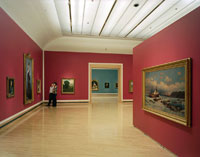 Its exhibition schedule seems appropriate. But it sounds as if this museum is yet another example of hubris. Again, from the Times:
Its exhibition schedule seems appropriate. But it sounds as if this museum is yet another example of hubris. Again, from the Times:
Since the $66 million art museum opened in downtown Roanoke in November 2008, the institution has struggled financially. The museum underwent two rounds of layoffs in 2009, and a third in February. Mickenberg, who was hired in September, has been working to craft a $3 million annual budget. According to its most recent audit and tax forms, the museum reported $6.8 million in expenses during its first year of operation.
The website refers to a “stellar permanent collection” but gives no details, no information whatsoever about what’s in it (though that press release to which I link describes it in generalities).
Roanoke sits in southwest Virginia, far from other museums. I wish its budget was in line with its expectations, or dreams. It wasn’t: according to an earlier article in the Times,
The radically expanded art museum’s expenses actually exceeded $6.8 million in its first fiscal year, according to a tax filing and external audit recently released by Taubman officials, far overshooting a projected $3.75 million operating budget.
The amount included one-time startup costs, but also payroll for 52 employees, likely more than the museum could have sustained even in healthy economic times.
“Reality began to set in pretty quickly after the opening,” said John Williamson, who was museum board president at the time. “And it’s been a struggle ever since.”
Read more of the oh-so-familiar tale here.
One could chalk this up to human nature: do we never learn?
UPDATE, 9/14/10: Jenny Taubman, who with her husband Nicholas has given millions to the museum — recognized in the name — has resigned from the museum’s board because “she couldn’t give the museum the attention it deserves” and evaded answering the question of whether she and her husband would give more to keep the museum alive. More here, courtesy of WDBJ.
Photo credit: Courtesy Taubman Museum of Art

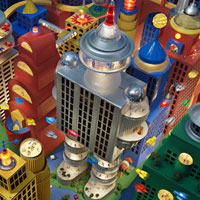 Ordinarily, I would pass up this opportunity to cite yet another example of an art museum dumbing down for the sake of attracting crowds. And I almost did, until I saw who organized the exhibition.
Ordinarily, I would pass up this opportunity to cite yet another example of an art museum dumbing down for the sake of attracting crowds. And I almost did, until I saw who organized the exhibition.  The description: it’s the “first museum retrospective of award-winning author and photographic illustrator Walter Wick. Author of Can You See What I See? and co-creator of the Walter Wick, whose I Spy book series loved by millions of children and adults around the world, Wick has a keen interest in puzzles, games, science and illusions. The exhibition will feature a selection of Wick’s early photographs, which provided a foundation for the artist’s interest in illusions. It will include several of the handcrafted, meticulously detailed installation models accompanied by his large-format color photographs that are the illustrations in his children’s books.”
The description: it’s the “first museum retrospective of award-winning author and photographic illustrator Walter Wick. Author of Can You See What I See? and co-creator of the Walter Wick, whose I Spy book series loved by millions of children and adults around the world, Wick has a keen interest in puzzles, games, science and illusions. The exhibition will feature a selection of Wick’s early photographs, which provided a foundation for the artist’s interest in illusions. It will include several of the handcrafted, meticulously detailed installation models accompanied by his large-format color photographs that are the illustrations in his children’s books.” 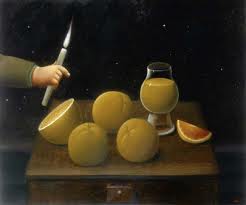 Clearly, he is the best-known Colombian artist: His works are in the National Museum and he has a museum of his own, Museo Botero. There, 123 of his works are on display along with 85 by European artists like Picasso, Bonnard, Caillebotte, Soutine, Roualt, etc., etc. and a few American ones, too — gilt by association.
Clearly, he is the best-known Colombian artist: His works are in the National Museum and he has a museum of his own, Museo Botero. There, 123 of his works are on display along with 85 by European artists like Picasso, Bonnard, Caillebotte, Soutine, Roualt, etc., etc. and a few American ones, too — gilt by association.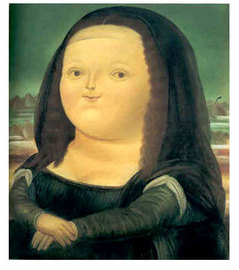
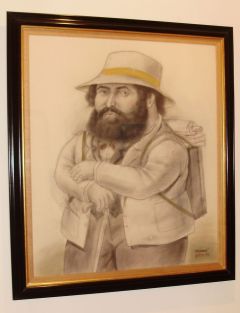 But I was also dismayed by Botero’s collecting. Even though he knows better, he seems to have embarked on a name-game trophy hunt. Most of the works are far from the best made by the painters in question. Some are terrible examples. If Colombians leave the Botero museum thinking they have seen Picasso, or Beckmann, or Renoir, or Monet, they will probably wonder what the excitement for those artists is all about.
But I was also dismayed by Botero’s collecting. Even though he knows better, he seems to have embarked on a name-game trophy hunt. Most of the works are far from the best made by the painters in question. Some are terrible examples. If Colombians leave the Botero museum thinking they have seen Picasso, or Beckmann, or Renoir, or Monet, they will probably wonder what the excitement for those artists is all about. 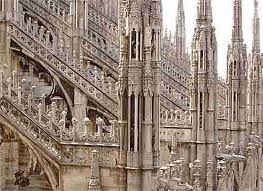 In the last several weeks, I’ve talked with a fair number of directors — a few over 50, but most younger. While there’s no unanimity — on almost anything — there is a decided movement toward rejecting the idea of museum as “cultural cathedral,” a moniker directors were once proud of.
In the last several weeks, I’ve talked with a fair number of directors — a few over 50, but most younger. While there’s no unanimity — on almost anything — there is a decided movement toward rejecting the idea of museum as “cultural cathedral,” a moniker directors were once proud of. 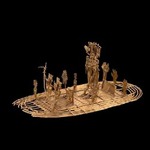 Traveling, to me, usually involves looking at the art a country has made and accumulated. Of course, one knows in advance that you don’t really go to Colombia, my summer vacation destination, to discover world-class art. But every country has something.
Traveling, to me, usually involves looking at the art a country has made and accumulated. Of course, one knows in advance that you don’t really go to Colombia, my summer vacation destination, to discover world-class art. But every country has something.  © Judith H. Dobrzynski (bottom three, all rights reserved)
© Judith H. Dobrzynski (bottom three, all rights reserved)